20 black LGBT leaders discuss the new African American history museum
"This is our museum. It's our history."

“I love American history. When I visit a town, the first thing I do is find the local museum.”
For months, Earl J. Fowlkes drove past the new Smithsonian National Museum of African American History and Culture, watching as the building slowly took shape. And now, on the cusp of its official opening, Saturday, Sept. 24, he’s overjoyed.
“This is our museum,” he says. “It’s our history.”
That history — over 400 years of oppression, liberation, struggle, recognition, pain, joy, achievement, and one incredible dream — is compressed into the 400,000-square-foot museum, at the intersection of Constitution Ave. NW and 14th St. NW. It has taken more than a decade to complete, and if there is one sentiment nearly universal among members of D.C.’s black LGBT community, it’s that the museum’s launch is long overdue.
“It’s been a long time coming,” says Phil Pannell. “I think it’s just so wonderful. This museum is just so meaningful to me.”
That the museum should finally open during the last months of President Barack Obama’s administration is highly symbolic. “Whenever a museum opens, the name of the person who is president at that point is displayed somewhere on the building,” says Sterling Washington. “It’s very fitting that the first openly black president is in office when the museum opens.”
It’s also fitting that, for a community whose history has been repeatedly marginalized over the years, the museum’s location — near the Washington Monument and in a prominent place on the National Mall — will ensure maximum exposure.
“The National Mall is where millions of people from around the world come each year to learn about our country,” says Clarence Fluker. “You can’t tell the story of America without our history — our story, from captivity to captivating, full of pain and power. Nothing could be more fitting than for this museum to take its rightful place at the core for education and enjoyment for global citizens.”
“I remember when they first proposed the museum, and they were talking about putting it in the Southeast,” says Darryl “DJ Mandrill” Harris. “I almost had a brain aneurysm when I read that. There were lots of black people who had lobbied that it be in Southeast, as opposed to on the mall. I was like, ‘You have got to be kidding me. Why would you hide something that’s so crucial and so important? Put it front and center where everything is.'”
“Often times, the contributions by African Americans, who have been here a long time, are overlooked,” says Fowlkes. “I wish we could just have an American museum for everyone. We don’t. That’s not how it works and unfortunately we need the African American museum to highlight the contributions the people of African descent have made to build this great country we live in.”
Sheila Alexander-Reid toured the museum last weekend and found the experience “overwhelming.” “It is an immersive experience of the contributions made by African Americans to the long, and sometimes shameful, history of our country,” she says. “The exhibits are thought-provoking, awe-inspiring, and interactive. As an African American, I left the museum with a very strong sense of pride.”
Reid notes that while the museum does not single out individuals who identified as LGBT, it does include exhibits featuring prominent LGBT figures, like comedian Wanda Sykes, playwright Lorraine Hansberry, WNBA star Brittney Griner, novelist James Baldwin, poet Langston Hughes, and legendary blues singer “Ma” Rainey.
Fowlkes, who was impressed at the museum’s efforts to obtain artifacts, says the inclusion of LGBT people is essential to documenting the full history of the African American community. “It was very emotional to receive a call saying, ‘We want African American LGBT historical artifacts,'” he says. “That made me feel really good.”
“I look at LGBT rights as human rights, and as being part of the overall civil rights agenda,” says Pannell. “The civil rights agenda was always incomplete when it was not including LGBT people.”
For CNN anchor Don Lemon, there’s no question that the LGBT community should be included as part of the museum’s exhibits.
“Gays have been on the forefront of not only the civil rights movement in the U.S., but have had an enormous influence on culture in general,” he says. “We’re everywhere. So, why not at the Museum of African American History and Culture?”
METRO WEEKLY: How does it feel to finally have the National Museum of African American History and Culture open on the mall?
RON SIMMONS (66, President of Us Helping Us: People Into Living): It is a glorious feeling — and to have the first black president open it in his last year is symbolic in itself. Too often, the impact of African Americans on American culture is ignored. The museum will help change that, because you can’t ignore a big building on the mall.
CORNELIUS BAKER (54, Chief Policy Advisor, Office of the US Global AIDS Coordinator): This is a transformative moment for the United States to recognize the central role of black people in the creation, building and development of this country. It is especially powerful to have the museum placed next to the Washington Monument and not far from the Lincoln memorial, reinforcing the importance of our history.
SHEILA ALEXANDER-REID (56, Director of the Mayor’s Office of LGBTQ Affairs): This museum is long overdue. The contributions of the African American to this country are immeasurable. This opening is very significant step in the long journey of advocating for the respect, accolades and visibility we deserve.
REV. DYAN ABENA MCCRAY-PETERS (66, pastor): It’s an incredible addition to the museums in Washington. It will allow for everyone to view and understand the journey of my people from the Motherland, to Jamestown, right up until today.
MICHAEL SAINTE-ANDRESS (65, actor/writer/lecturer): It’s certainly long overdue and will be a tremendous marker of the significance of the indelible contributions of African Americans to the overall culture of this country. I am filled with pride, reverence and joy to be able to witness this achievement. It is encouraging, uplifting and bodes well for our collective future.
TERRANCE LANEY (32, government employee): It feels like a tremendous victory for black history and culture. There is a prevailing myth that African Americans do not have our own distinct culture that is worthy of respect and dignity. Opening this museum vindicates every African American genius who used their creativity to help us survive atrocities and generations of oppression with style, dignity and unmatched flare.
ALAN SHARPE (63, Founding Artistic Director, African American Collective Theater): In a word, affirming. While it’s true that the African American experience is inextricably entwined in the nation’s history and culture, and that prior, individual exhibits have certainly highlighted some of those contributions, the prominent presence of a Smithsonian Museum on the National Mall that is focused on the seminal impact of the African American journey in this country is exciting and essential.
ANGELA PEOPLES (30, co-director of Get Equal): It feels like a thing that is long overdue, but it also feels very meaningful that we are transitioning away from the first black president. We’re wrapped up in the end of the first black president’s term and this is happening. We’re also in the moment of not just unprecedented coverage and visibility, and really escalation of violence against black people by the state, but we’re also seeing a real resurgence of a new iteration of a black liberation movement in our country.

MW: Have you been through the museum yet? If not, when are you planning to go?
MONTE J. WOLFE (41, artist): I have yet to visit the museum myself but I am certainly looking forward to taking it all in, learning something new, and, most of all, looking forward to being inspired, which I’m sure is going to be a huge part of my experience.
JUNE CRENSHAW (55, Executive Director of Wanda Alston Foundation): I am really looking forward to experiencing it with my 7-year-old granddaughter. She and I spend a lot of time at the National Museum of the American Indian, Air and Space, and Natural History. I can’t wait to see her reaction to touring the museum and being surrounded by history and people that look like her.
SAVANNA WANZER (activist): I have not visited the inside yet, the outside structure is beautiful and the fine iron African art work that frames the build is breathtaking and so beautiful.
SHARPE: I have read and seen a number of articles and video profiles on the museum, and followed its evolution. I do have my tickets for the first week after the dedication and am looking forward to finally getting to visit it in person. I fully expect it to be an educational, entertaining and overwhelming emotional experience.
DARRYL “DJ MANDRILL” HARRIS (58, former DJ and nightlife promoter): I tend to want to see things on my time when they are not the go-to thing. It’s not something I have to see immediately and when I looked into how the tickets were purchased and how people were going I thought, “Well, you know what? Maybe I should just wait until the fray is over and I’ll see it in the spring or so of 2017 rather than rushing to get it when there is so much going on around it right now.” I’m not a great crowd person. I know there is going to be a crowd any time I go, but the frequency is going to be turned down.
RAYCEEN PENDARVIS (66, activist and host of The Ask Rayceen Show): I gave my tickets away to someone else because I only had two. I want to take my family — my mother, my grandchildren, and my great-grandchildren. I’m waiting at a later time to take four generations.
MW: How important is it that the museum cover LGBT issues in the African American community?
DON LEMON (50, journalist and host of CNN Tonight): It’s very important. Gays have been on the forefront of not only the civil rights movement in the U.S., but have had an enormous influence on culture in general. We’re everywhere. So why not at the Museum of African American History and Culture?
BAKER: The museum would be incomplete and ahistorical if the contributions of LGBT were not included. James Baldwin is essential to the story of black culture and Bayard Rustin is essential to the struggle of the 1960s. Their lives and those of other LGBT people is part of our history and our future.
WOLFE: Personally, I feel it’s imperative for LGBTQ issues in the African American community to be an integral part of what is presented in the museum. While our experiences as black LGBTQ people are markedly different and unique in a variety of ways, we are still — and have always been — very much a part of the beautiful tapestry that is black people, and that needs to be demonstrated and celebrated through this very important medium which has massive potential to not only educate, but to unify people from all walks of life.
CRENSHAW: It’s very important. When I first started in my position as Executive Director of the Wanda Alston Foundation, I had an African American lesbian resident of the Wanda Alston House come to me to say she had never seen or known a lesbian like me before, and that she wanted to be just like me. I am not special, but what that experience emphasized for me is that we don’t have enough LGBTQ role models that our youth can connect with. We don’t have a place to learn our LGBTQ history. Covering LGBTQ issues and history will fill a gap in our community.
CLARENCE FLUKER (36, Deputy Director of the National Parks Division of the White House Council on Economic Equality): I salute Lonnie Bunch, founding director of the Smithsonian National Museum of African American History and Culture for ensuring that the lives and contributions of LGBT people have been organically woven into the beautiful tapestry that is the museum from day one. The museum’s curation reinforces the message that we are a family and that everyone is valued. From advocacy to the academy, politics to poetry, spirituality to sports, African American LGBT people have always been a presence or force in our community and we will continue to be seen.
FRANCISCO-LUIS WHITE (30, writer and literacy tutor): You can’t speak of black history in this country and not recognize those queer and trans individuals without whom we wouldn’t have attained the progress we speak of. Likewise, we can’t speak of our continued struggle as black people in a racist country without speaking to where the struggle is perhaps most difficult: at the intersection of African American identity and queer or trans identity. It can’t be done any other way.
SAINTE-ANDRESS: It is ironic that the absence and minimization of the African American presence in the nation’s culture and history is the same dynamic with the inclusion and recognition of the LGBT existence in the African American community. For the integrity of the project to be intact, this inclusion must be acknowledged and presented.
SHARPE: LGBT issues, history and contributions are as intrinsic to the African American experience as that experience is to the evolution of the country as a whole. A museum that did not acknowledge, examine and celebrate LGBT life within that mosaic would be missing an integral component of African American history and culture.
PHILIP PANNELL (65, Executive Director of the Anacostia Coordinating Council): Let’s be honest about it. You can’t really talk about African American literature from maybe the beginning of our country to the current without mentioning Zora Neale Hurston or James Baldwin. The March on Washington in 1963, which is one of the major events in civil rights in American history, and also where Martin Luther King gave his “I have a dream” speech — well, the chief organizer of that was a gay man, Bayard Rustin. A black gay man. Even today I would ask people to just shut their eyes and imagine what our communities and what our nation would be like if all of a sudden all the LGBT African Americans disappeared. I hope that if it’s not included in the exhibits, that at least in terms of future programming in the museum, there will be some type of programs or special exhibits on appropriate occasions.
MW: What LGBT-focused exhibits would you like to see in the museum?
SIMMONS: An exhibit that explains the traditional African cultural conception of gays and lesbians before the coming of the Europeans. I have done some research and it’s profound. It will say so much about the past that we need to know today and teach black LGBT youth tomorrow.
BAKER: It would be important to see an exhibition on the role of black political leadership in the achievement of LGBT rights in America. The role of A. Philip Randolph, Martin Luther King, Jr., Willie Brown, Marion Barry, and Jesse Jackson, Deval Patrick, and Barack Obama as heterosexual black men is particularly powerful in countering the narrow stereotype of ingrained prejudice in black communities.
LEMON: I’d like to see one that celebrates black gay men. For so long we’ve been made to believe that being a black gay man was the worst thing on earth. An exhibition could help change that. I’d also like to see one on black transvestites. They are pioneers in gay culture. It’s high time they get their due.
WOLFE: Because I’m an artist, I would personally love to see any and all black LGBTQ artists throughout time. To see black gay, lesbian and trans people like myself who have shared of themselves through the vehicle of the arts would warm my heart.
LANEY: I would like to see old love letters and historic photographs of black same-sex couples. I really want to see people like George Washington Carver, Bayard Rustin, Langston Hughes, Bessie Smith, Pauli Murray and Marsha P. Johnson brought to life through their intimate relationships as well as their contributions to society.
WANZER: I know I would love to know more about how Coretta Scott King helped the LGBT community and how she went around the world helping us with human rights issues.
SHARPE: In addition to obvious and major contributions to arts, education and culture, I would hope that the museum’s exhibits will do much to shed light on LGBT involvement in politics, government, science, civil rights activism, religion, business, sports, media, technology and other areas where our involvement has not historically been as widely known and recognized.
ZAR (Production Director for The Ask Rayceen Show): Seeing an exhibit about black LGBTQ club life would be terrific. From Disco to House music to Ball culture, there is so much that started within those spaces that is now mainstream. Homage should be paid.
FOWLKES: My hope is that it’s integrated within all aspects of African American histories. I don’t necessarily want to see any particular focus. I think I just want to see, obviously our contributions to the civil rights movement and our contributions in the war effort. There’s so many things we do I can think of.
PEOPLES: The leadership of Marsha P. Johnson, helping to make the Stonewall uprising, and helping to birth what is now the modern LGBTQ movement.
HARRIS: I don’t know what I want it to look like, but just factual information, the data related to a specific event that were key moments. I would imagine it would be something about music and dance, the theater — Alvin Ailey, Geoffrey Holder, those kind of folks. Something that points out their contributions so that maybe somebody else would get credit for voguing besides Madonna.
PENDARVIS: One surrounding the ballroom community, the effect of LGBTQ people in areas of politics, religion, fashion, and television. As much as the ballroom community has impacted our lifestyle, unfortunately mainstream society only has been given a glimpse of just what ballroom is, but not the fullness and richness of the entire culture.

MW: The LGBT movement is often compared to the Civil Rights movement. Do you feel it’s an apt comparison?
SIMMONS: No, because few died for the LGBT movement, as opposed to black people who have been enslaved and tortured for centuries in this country. The most the white LGBT community had to deal with was how to hide in plain sight. black people were being hunted down and lynched. Second, the LGBT movement has yet to give credit to the Civil Rights movement for inspiring it. blacks demonstrated that you could riot in the streets to demand justice. I can remember the early days of the gay liberation movement and its parade in New York City when a white drag queen carried a huge red, black and green flags to symbolize the link between our struggles. When white LGBT organizations like the Gay Activist Alliance adopted a “gay only” agenda, the gay movement abandoned the black community, and left it to deal with white racist oppression on its own.
LEMON: Yes and no. Discrimination is discrimination. But let me put it this way. I’ve been discriminated against far more for being black than for being gay. People don’t always know I’m gay. They always know I’m black. And white gay people have always been allowed access to jobs, education, wealth and the voting booth — especially white gay men. So it’s not really the same thing.
MCCRAY-PETERS: Rights for all people remains an important factor. What has happened because of the Civil Rights movement helps produce and influence what takes place within the LGBT movement. Civil Rights speaks to the rights that every person regardless of their sex, race or religion should have. There are rights of personal liberty guaranteed to U.S. citizens by the 13th and 14th Amendments to the Constitution, in addition to acts of Congress.
CRENSHAW: I feel that the LGBTQ movement and the Civil Rights movement are very similar. I think attempts to imply that one group’s struggle for equality, equity and fairness is different than that of another group’s is just an attempt to alienate and malign. My favorite Martin Luther King, Jr. quote is, “No one is free until we are all free.”
WHITE: Are they separate movements? As someone who exists in a very black and very queer body, as this society has deemed it, I can’t separate or differentiate concurrent movements for my liberty. To do so, or to be asked to, is to divide myself into two parts and maybe even value one part over the other. Is that ever asked of others?
SAINTE-ANDRESS: I have never fully understood why there was a conflict with that notion in the first place. I was reared in the segregated South in the 1950s and ’60s and was keenly aware of racism and social injustice. I was taught fairness, compassion and respect for others, no matter the differences between us. To me discrimination is discrimination, no matter how it is manifested. The Civil Rights movement was certainly the springboard for those other areas of activism, but the focus was always ensure a decent quality of life and freedom of all people.
LANEY: Are these different movements? I refuse to see these struggles as separate because that is how we continue to perpetuate destructive myths about race and LGBTQ identities. They are the same movement and as soon as we acknowledge this truth the better we will be as a people. An out black gay man, Bayard Rustin, engineered the most successful demonstrations of the civil rights movement and to Dr. King about non-violent civil disobedience.
ZAR: There are similarities amongst all struggles and injustices, but various groups of people have been persecuted in different ways, and that should be recognized.
FOWLKES: All movements in this country have started from some place else. It’s no more unfair to compare the Civil Rights movement to the women’s rights movement, or the disabled rights movement, or the seniors movement. All these other movements that have taken place. The labor movement. The Immigration movement. They all start from some place else. The black Civil Rights movement is used as a model around the world to achieve human rights for many different types of people, many different types of constituencies. So I don’t think it’s unfair to compare the LGBT movement to the black Civil Rights movement. We all come from the same roots. It’s about community organizing. It’s about protests. It’s about peaceful protests. It’s about changing hearts and minds and the law.
MW: Have things improved in the African American
community with respect to LGBT people? What has your personal experience been?
SIMMONS: Things have improved tremendously. You can see it in the youth. They are openly coming out at age 13. black gay and lesbians couples have marriage protection for their children. More black churches have become open and affirming. There is a cadre of young black gay men who are being developed and who see themselves as future leaders.
LEMON: Yes, things have improved for some in the community, but not all. We have to be more inclusive and welcoming to all the letters in LGBT. Perhaps we should add a C to that, for people of color.
CRENSHAW:I do think improvements have been made and I also think we have a lot of work left to be done. Our ability as African American LGBTQ folks to come out of the closet and live openly and authentically is the way to change hearts and minds and to help evolution to occur in our culture. I have been out for a long time, but I have African American friends and colleagues that still struggle with their sexuality and gender identity. Many of our African American LGBTQ youth are homeless because of family rejection. We have legal protection but our lived experience is very different from that of some of our white counterparts.
WHITE: Anything shy of absolute freedom from violence and oppression is not enough. Progress toward being actually safe and fully affirmed as who we are can’t be compared to the end goal. We have so far to go, but what I will say is, we’re getting there.
LANEY: African American people have our own cultural perspectives about sexuality that is valid and has to be respected, so I can’t really compare us to other groups or cultures. I cannot measure the progress that LGBT people have made within our community because black people as a whole have so much more progress to make when it comes to all of our rights. After all, we are still fighting for our basic right to live and be treated as citizens in this country.
ZAR: I think homophobia within black communities has often been exaggerated. There have always been people of every ethnicity who have been progressive, liberal, open minded. I think things have improved because people are more informed thanks to education and technology. Religion has been the primary culprit, and thankfully dogma goes unquestioned less frequently now.
PEOPLES: There’s a lot of misconceptions and misnomers that black folk are somehow more anti-LGBT than other communities. How we love each other, how we are in community, how we are in family with each other looks different than how might looks to a white “mainstream” organization. So yeah, for white LGBT people, it might be a perspective that black families are much more anti-LGBT than white folks, but I think that’s not true. I think what I’m really grateful for right now is seeing the transformative leadership coming in this movement from Black Lives Matter. Being led by queer folks, black trans women, gender non-conforming folks — I’m very grateful for really being seen and learning from all of that.
WASHINGTON: President Obama’s support of marriage equality in 2012 moved the needle towards that in many ways. I was actually one of the people who was concerned about him doing that. As it turns out it was fine. It was fortuitous that he did it, because he moved a needle that much quicker. There were any African Americans who, for whatever reason had not made that step forward in their thinking, who reevaluated after the president was very strong in his support of the LGBT community.
MW: Would you like to see a museum in Washington exclusively for LGBT history?
SIMMONS: Why not? As long as it’s honest about how the Civil Rights struggle inspired Stonewall and the modern gay movement.
BAKER: If it had a historical root and sustainable anchor.
MCCRAY-PETERS: Having a museum in Washington that is exclusively for the LGBT community that tracks our history would be an interesting venue. The duality of creating the venue to highlight diversities of the many LGBT cultures as it relates to beliefs, customs, arts and the way of thinking would be most interesting.
CRENSHAW: I think it would be great to have a museum in Washington for LGBTQ history. Washington is a mecca for LGBTQ people. We come here because there are both protective and inclusive laws but also because there are opportunities. It is also important for LGBTQ folks to have a museum that documents our history, experiences and life.
SAINTE-ANDRESS: I support that idea as a goal. The treasure trove of information and materials is so overripe that an exclusive representation is almost mandatory.
LANEY: Yes, but only when our leaders and those with power in the LGBT community have the intersectional perspective to create a museum that honors and celebrates the complexity of our experiences, the diversity within the community, and can acknowledge all the people who have been marginalized or silenced in the LGBT community since the beginning of the organized struggle for civil and humans rights for LGBT people.
SHARPE: I would love to see such a museum. I think it could be extremely enlightening, not only to the broader public, but just as importantly, to the the LGBT community, in terms of educating, affirming and empowering us to live our lives proudly, in the full truth of our existence.
ZAR: It would be interesting to have a LGBTQ museum. I would definitely lobby for a Rayceen Pendarvis exhibit. I hope Team Rayceen has the opportunity to collaborate with NMAAHC. Much of what we do at “The Ask Rayceen Show” correlates with what the museum is doing: informing, educating, and shining a spotlight on individuals and populations who are often denied one. I think it’s important for NMAAHC to not just commemorate and celebrate the past, but also to highlight the present and look to the future.
FOWLKES: I think it would be fantastic. We have museums of everything in the world, and a specific museum that highlights the broad mosaic of LGBT history and our contributions and struggles would be welcome.
ANGELA PEOPLES: My instinct is to say no right now because, having a museum that’s specifically dedicated to LGBTQ implies that other identities aren’t included. That history exists outside of the history for black LGBTQ people.
PHILIP PANNELL: Well, I’m not sure it would be on the Mall because there are people who are complaining now that, “There’s not very much space left on the mall for any major museums.” But I would like to see a museum here in the nation’s capital for LGBT history and culture. Whether or not it would be Smithsonian? I think that that would be a bit problematic in the sense that, with it being a governmental institution, you would have automatic opposition coming from conservatives. If they could find space for something like the Spy Museum, they could definitely find some space in the nation’s capital for an LGBT museum.
WASHINGTON: Interesting idea. I don’t necessarily think that the museum would need to be on the Mall, but I don’t see why there shouldn’t be one. I’m very concerned about the Mall being eaten up. I would hate to think that every little spot of green space would be taken on the Mall. When the museum site for the African American museum was announced, I had some mixed feelings about it, because around that time, there was talk of the USDA building moving off the mall, and I thought, well, that would be a great spot for it. Here’s a spot where it’s already got a building, and you can knock that down, and create a museum there, it’s not like you’re eating up any more green space. I mean, that’s my concern, I don’t know if anyone else cares about green space on the Mall. I do.
PENDARVIS: Yes, I would like to see one. I would like to be featured in it. I would like to contribute as a historian on both sides of African American history and LGBT history.
LEMON: Simple answer. Hell yes!
The Smithsonian National Museum of African American History and Culture, at 1400 Constitution Ave. NW, will officially open on Saturday, Sept. 24, with a dedication ceremony at 10 a.m. The museum will be open 364 days a year, except Christmas Day, from 10 a.m.-5:30 p.m. Due to heightened interest, the museum is offering timed entry passes to the public. The next available timed entry passes are for the months of November and December. To purchase passes, or for more information on the museum, visit nmaahc.si.edu.
Support Metro Weekly’s Journalism
These are challenging times for news organizations. And yet it’s crucial we stay active and provide vital resources and information to both our local readers and the world. So won’t you please take a moment and consider supporting Metro Weekly with a membership? For as little as $5 a month, you can help ensure Metro Weekly magazine and MetroWeekly.com remain free, viable resources as we provide the best, most diverse, culturally-resonant LGBTQ coverage in both the D.C. region and around the world. Memberships come with exclusive perks and discounts, your own personal digital delivery of each week’s magazine (and an archive), access to our Member's Lounge when it launches this fall, and exclusive members-only items like Metro Weekly Membership Mugs and Tote Bags! Check out all our membership levels here and please join us today!





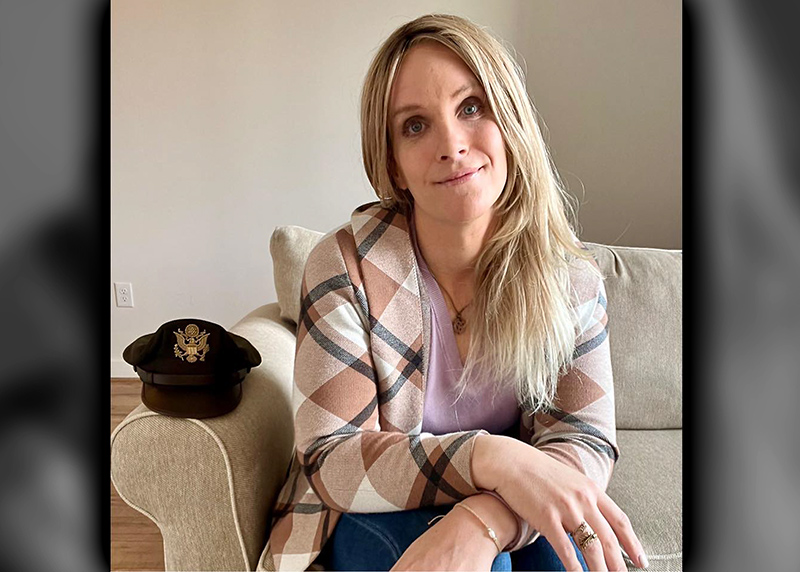
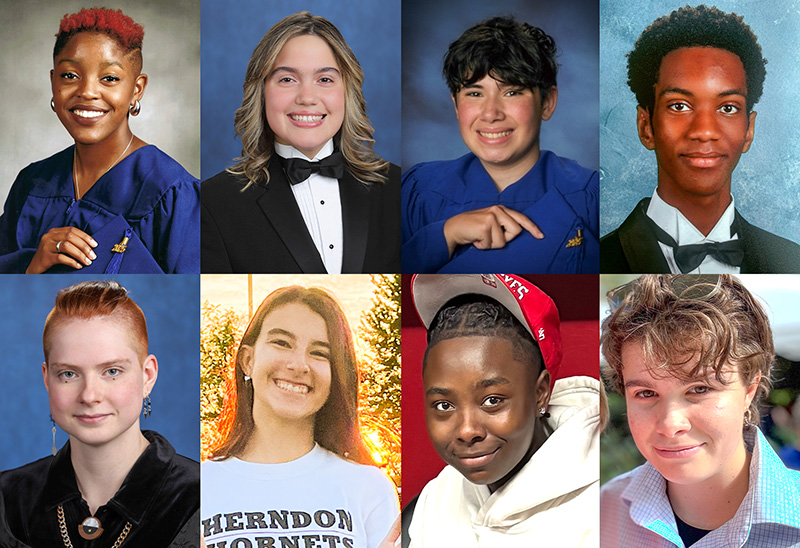
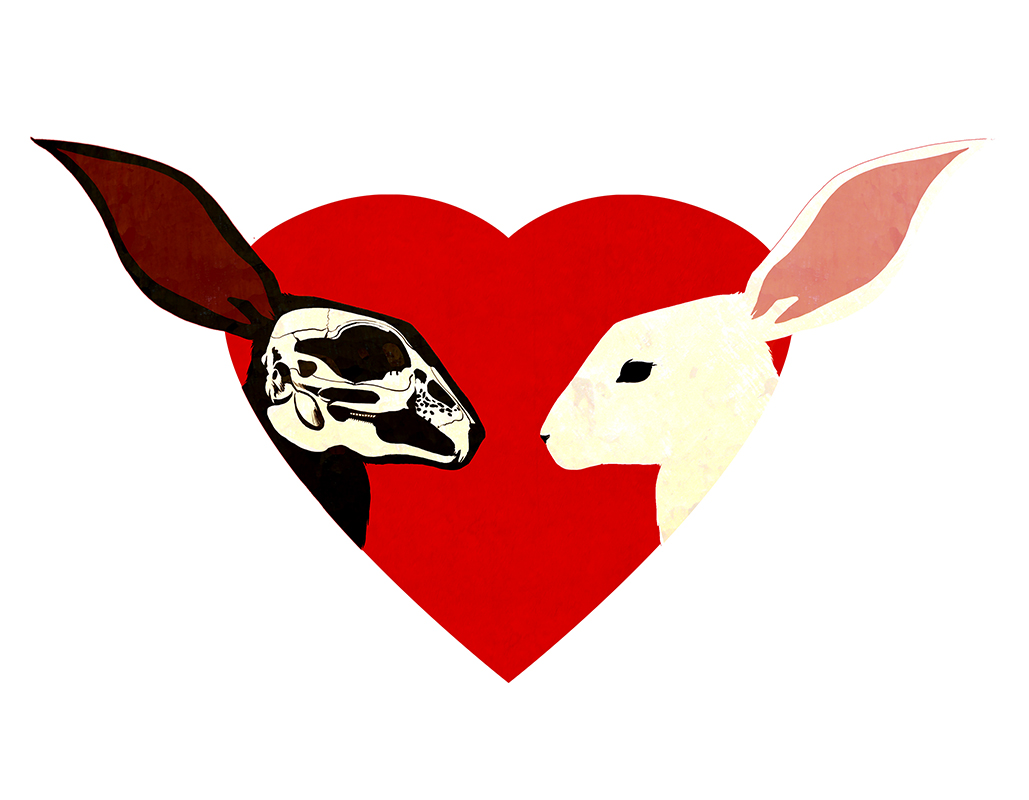















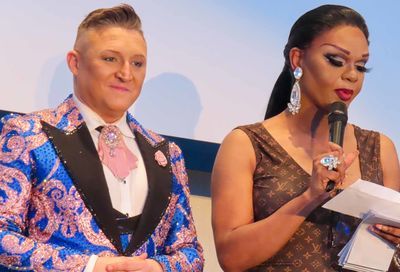
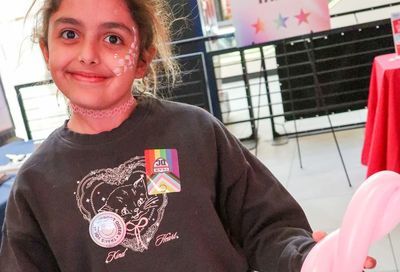
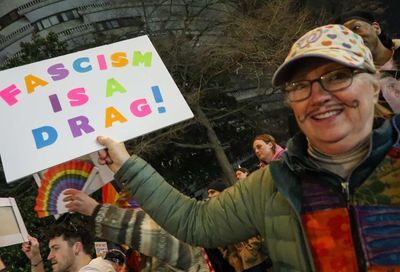
You must be logged in to post a comment.